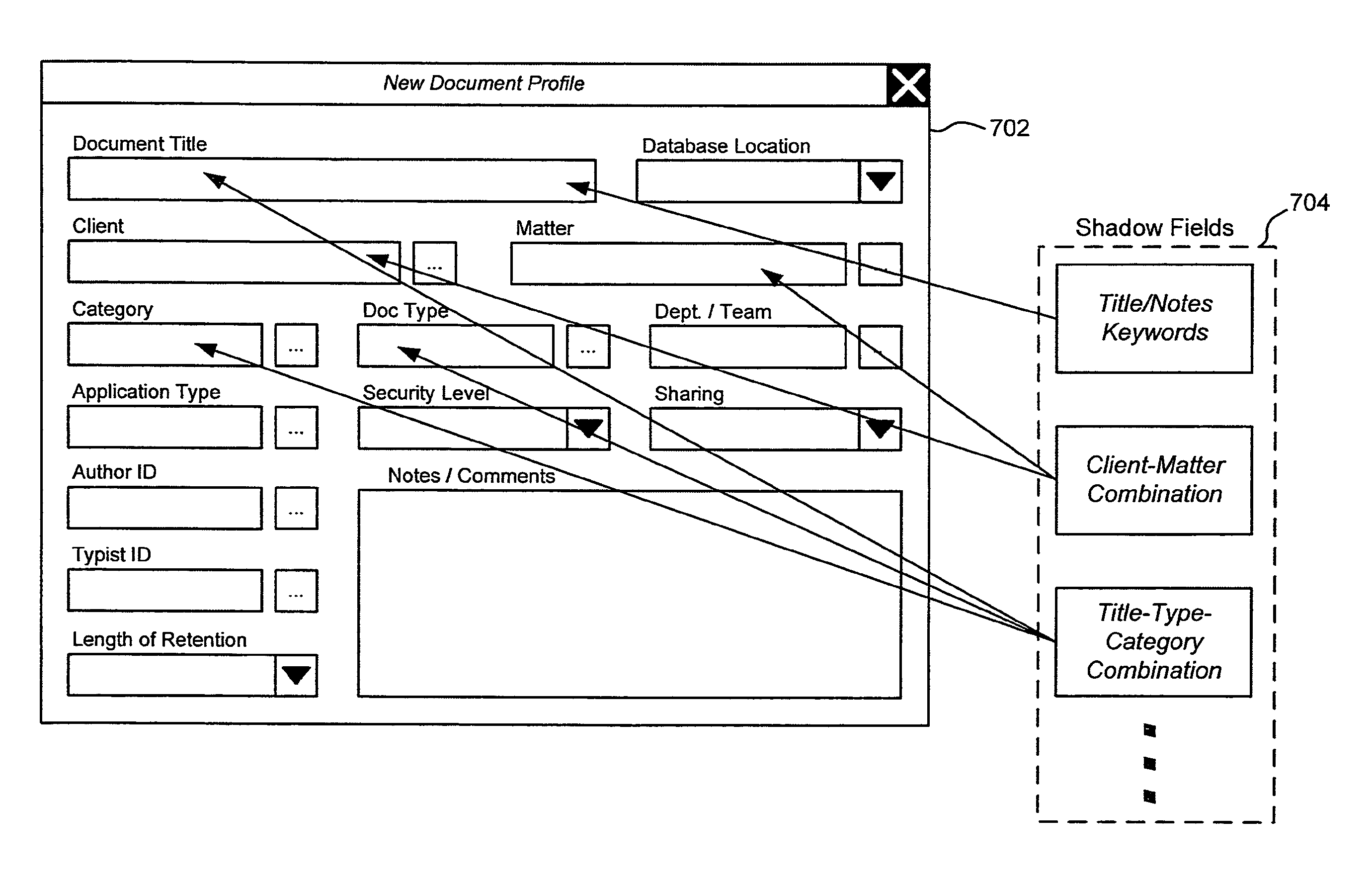Document management techniques to account for user-specific patterns in document metadata
a document management and user-specific technology, applied in the field of electronic document management, can solve problems such as difficulty in a traditional sql query to distinguish one document from another, differences in choosing or entering document metadata, and subsequent document retrieval problems
- Summary
- Abstract
- Description
- Claims
- Application Information
AI Technical Summary
Benefits of technology
Problems solved by technology
Method used
Image
Examples
Embodiment Construction
[0028]Embodiments of the present invention provide document management techniques to account for user-specific naming patterns. Document metadata created and / or modified by individual users may be monitored, analyzed or otherwise processed to capture user-specific naming patterns in describing documents. Such user-specific naming patterns may be stored in association with individual users. Metadata of one user's documents may be modified or enhanced based on the naming patterns of that user. The user-specific naming patterns may be employed in a number of ways to facilitate more effective and more efficient document retrieval. For example, a subsequent document query submitted by one user may be modified or enhanced based on the naming patterns of other users who have commensurate entitlements as the user submitting the query. Alternatively, metadata of one user's documents may be converted, based on that user's naming patterns, either to conform to another user's naming patterns or...
PUM
 Login to View More
Login to View More Abstract
Description
Claims
Application Information
 Login to View More
Login to View More - R&D
- Intellectual Property
- Life Sciences
- Materials
- Tech Scout
- Unparalleled Data Quality
- Higher Quality Content
- 60% Fewer Hallucinations
Browse by: Latest US Patents, China's latest patents, Technical Efficacy Thesaurus, Application Domain, Technology Topic, Popular Technical Reports.
© 2025 PatSnap. All rights reserved.Legal|Privacy policy|Modern Slavery Act Transparency Statement|Sitemap|About US| Contact US: help@patsnap.com



